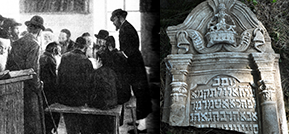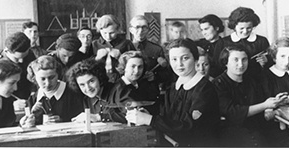Jarosław ירוסלב
Name in English:
Yaroslav
Name in Ukrainian:
Yaroslav
Name in Polish:
Jarosław
Name in German:
Jaroslau
Name in Hebrew:
ירוסלב
Name in Yiddish:
יאַרעסלאָוו (Yareslov)
Historical-cultural region:
Western Galicia
Administrative District :
Subcarpathian Voivodeship
Population Data:
|
Year |
General Population |
Jewish Population |
|
1872 |
(?) |
More Than 4500 |
|
1880 |
11422 |
4474 |
|
1890 |
18065 |
4820 |
|
1900 |
22660 |
5705 |
|
1910 |
23965 |
6154 |
|
1921 |
19973 |
6577 |
|
1931 |
22195 |
6272 |
External links:
Items relevant to the community
| Title | Type of item | Years |
|---|---|---|
| "Umowy prywatny", oraz kwity, kontrakty i akta ... | CAHJP Cards | 1628 to 1759 |
| "О лицах иудейского вероисповедания, служащих... | CAHJP Cards | 1915 |
| "О неблагонадежном элементе Галиции", в т.ч. ... | CAHJP Cards | 1915 |
| - Wahl von Rabbinern und Bewerbern zur Gemeinde... | CAHJP Cards | 1834 |
| 1. Doniesienia o pogromach i incydentach antyse... | CAHJP Cards | 1881 |
| 1. Okólniki, sprawozdania, korespondencja i inn... | CAHJP Cards | 1882 |
| 1. Okólniki, sprawozdania, korespondencja i inn... | CAHJP Cards | 1898 |
| 1. Okólniki, sprawozdania, korespondencja i inn... | CAHJP Cards | 1898 |
| 1. Okólniki, sprawozdania, korespondencja i inn... | CAHJP Cards | 1882 |
| 1. Okólniki, sprawozdania, korespondencja i inn... | CAHJP Cards | 1882 |






